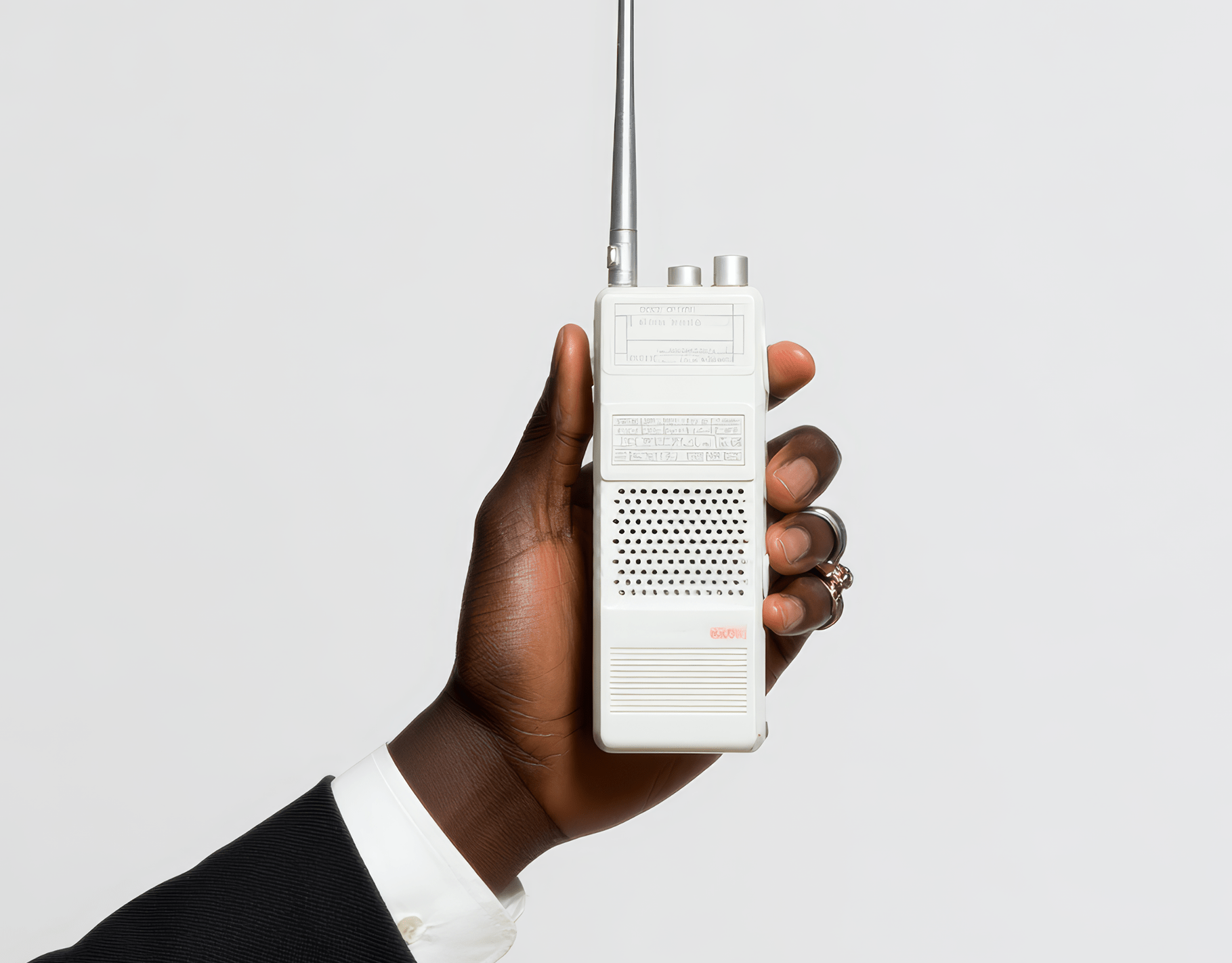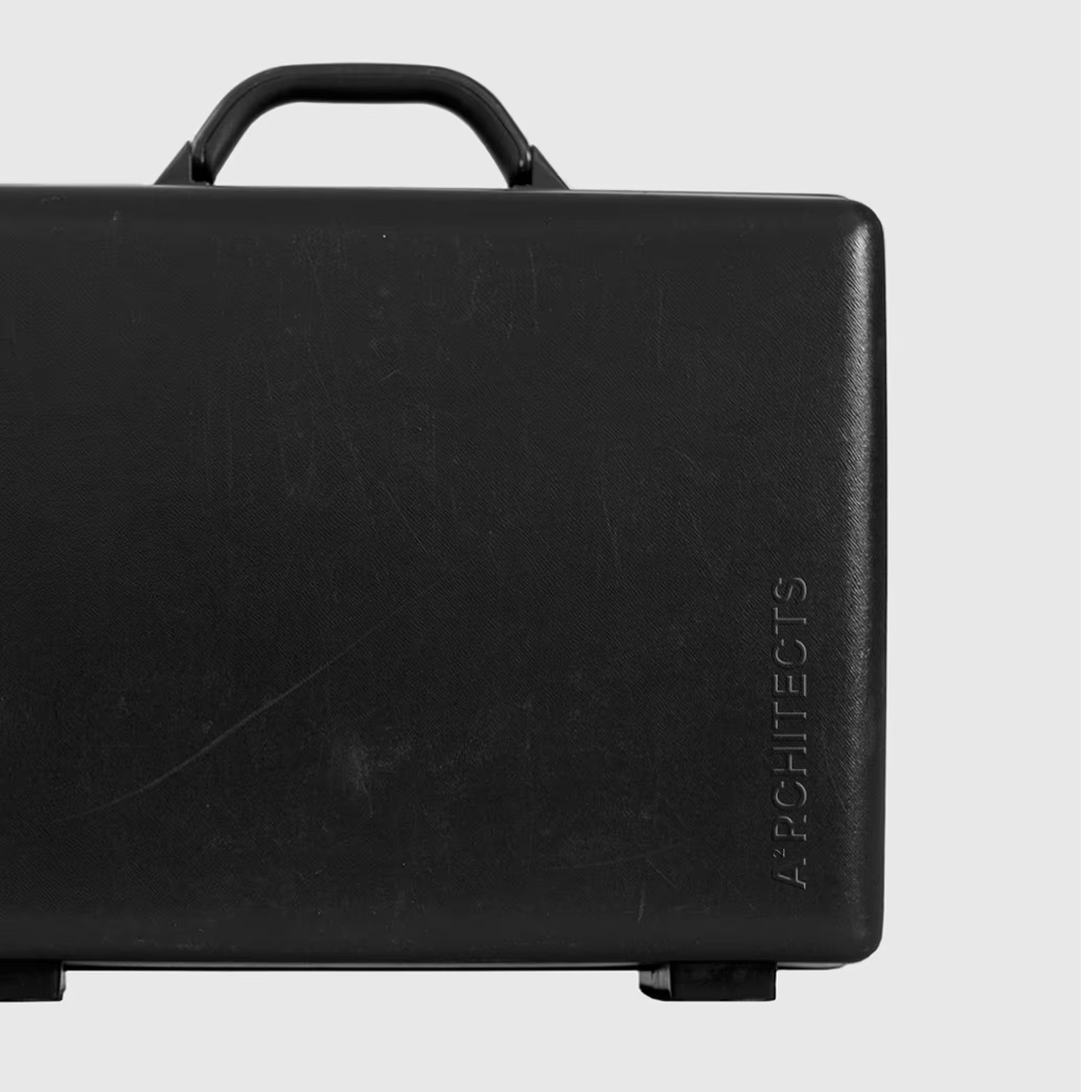Quick Summary: What is Brand Strategy?
Brand strategy is the long-term plan for developing a successful brand identity that achieves specific business goals. In 2025, effective brand strategy embraces four key paradoxes:
- Intimacy at Scale: Creating personal connections with millions simultaneously
- Invisible Authority: Being omnipresent without feeling intrusive
- Simple Complexity: Sophisticated systems that deliver effortless experiences
- Accidental Journeys: Sales paths that feel like natural discovery
Key Takeaway: The most successful brands in 2025 don't follow conventional wisdom—they master contradictions that create competitive advantages.
What Is Brand Strategy and Why Does It Matter in 2025?
What is brand strategy in this new era? At its core, it’s about creating value through individual-specific experiences at scale. From what we've witnessed working with brands that are actually thriving (not just posting inspirational quotes about growth). This personal touch continues to help businesses grow as customers prefer brands that understand them.
According to research done by Mckinsey, 71 percent of consumers expected companies to deliver personalized interactions, and 76 percent got frustrated when it didn’t happen. But here's the thing: the brands that understand this aren't following any playbook.
Most successful digital brands in 2025 don't follow conventional wisdom; they embrace certain paradoxes that seem contradictory but create unprecedented competitive advantages.
It's like watching someone walk backwards and somehow get there faster than everyone else running forward. Understanding these paradoxes is the key to unlocking an authentic brand strategy; one that actually works in practice, not just in theory.
Paradox 1: The Intimacy-at-Scale Contradiction
The Challenge: How do you maintain genuine human connection while reaching thousands if not millions of people?

The conventional approach treats scale and intimacy as opposing forces, like trying to have a deep conversation at a concert.
But brands that are actually killing it have discovered something counterintuitive: micro-communities within macro-platforms create the illusion of intimate conversation while achieving massive reach.
Instead of broadcasting to everyone, these brands create what we call "intimate broadcast moments"; content that feels personal to each viewer while being consumed by thousands simultaneously.
Think of it like a comedian who makes eye contact with the entire audience but somehow makes each person feel like the joke was just for them.
Real Example in Action: Take Glossier's approach to product launches. They don't announce new products with traditional marketing blasts. Instead, they create what feels like insider intel: dropping hints in Instagram stories, having their founder casually mention products in podcast interviews, letting their community feel like they're discovering secrets. Each touchpoint feels like a personal conversation with Emily Weiss, even though millions are having the same "intimate" experience simultaneously.
The Practical Shift: Brands are moving from audience segmentation to "emotional moment mapping"; identifying the precise emotional states when their audience is most receptive to brand messaging.
Here's how this works practically: Instead of targeting "women 25-35 interested in skincare," successful brands target "people experiencing Sunday night anxiety looking for small acts of self-care."
The difference?
One is a demographic bucket, the other is a human moment.
This paradox becomes especially critical when your brand identity starts feeling fractured across different platforms - a clear sign that your strategy needs recalibration to maintain consistency while scaling intimacy.
Paradox 1 implementation guide:
Step 1: Map Your Emotional Moments (Week 1)
- Survey your best customers about their emotional state when they first engaged with your brand
- Identify 3-5 recurring emotional moments (e.g., "Sunday planning anxiety", "post-meeting exhaustion")
- Document the language, concerns, and desires present in each moment
Step 2: Create Micro-Community Identifiers (Week 2)
- Develop 3-5 micro-personas based on emotional states, not demographics
- Create unique content themes for each micro-community
- Design visual/verbal cues that signal "this is for you" to each group
Step 3: Design Broadcast Moments (Week 3)
- Script content that uses inclusive language ("we" instead of "you")
- Include specific details that only your micro-community would recognize
- Create multiple entry points within the same piece of content
Step 4: Test and Iterate (Week 4+)
- Track engagement by emotional moment, not just overall metrics
- A/B test different intimacy signals (personal stories vs. shared experiences)
- Measure "this feels like it's just for me" sentiment through surveys
Paradox 2: Visibility vs Invisibility – Balancing Your Brand Presence
The Counterintuitive Observation: The most visible brands often feel invisible in their execution.
While everyone talks about "standing out," brands like Allbirds have mastered the art of contextual camouflage; they blend so seamlessly into their audience's natural digital behavior that their presence feels organic rather than intrusive.
They give this subtle feeling of visibility without overdoing it. For instance, when they leverage user generated content in their own content. They also communicate their core values like sustainability and comfort instead of overwheling their customers with sales pitches; rather, they give you this vibe of invintation.
Additionally, consider how Spotify's year-end Wrapped campaign works. It doesn't feel like marketing because it arrives exactly when users are naturally reflective about the year, and it gives them something they actually want to share. The brand becomes invisible in the execution but omnipresent in the conversation.
This seamless integration requires sophisticated company branding strategies that work across every digital touchpoint. When brands achieve this balance, they create "invisible authority"; influence that feels natural rather than forced. This is where understanding the hidden power of brand consistency becomes essential. It's the invisible thread that makes scattered digital interactions feel cohesive.
Paradox 2 implementation guide:
Step 1: Audit Your Current Visibility (Week 1)
- List every brand touchpoint across all platforms
- Rate each from 1-10 on "interruption factor"
- Identify moments where you're fighting for attention vs. naturally present
Step 2: Map Natural Behaviour Patterns (Week 2)
- Study when/where your audience naturally engages with content
- Identify "white space" moments in their digital journey
- Document platform-native behaviours you can mirror
Step 3: Redesign for Contextual Presence (Week 3)
- Reformat content to match platform conventions exactly
- Remove obvious brand markers from 80% of touchpoints
- Focus on value delivery over brand recognition
Step 4: Build Recognition Through Consistency (Week 4+)
- Develop subtle brand signatures (tone, rhythm, perspective)
- Create value patterns that become associated with your brand
- Let attribution happen naturally through consistent excellence
Paradox 3: The Complexity-Simplicity Fusion
.png)
The Insight: The most sophisticated digital brand strategies appear deceptively simple.
Behind every "simple" viral moment or seamless user experience lies what we call "invisible complexity"; sophisticated systems, AI-driven personalization, and intricate data orchestration that the end user never sees. It's like watching a swan glide across a pond while its feet paddle frantically underwater.
Real-World Breakdown: Take Warby Parker's "try at home" program. To customers, it seems elegantly simple: pick five frames online, try them at home, buy what you like. But the invisible complexity includes:
- Predictive algorithms that suggest frames based on face shape analysis
- Inventory management systems that ensure popular frames are always available for home trials
- Reverse logistics that make returns effortless
- Customer service protocols that turn every interaction into a brand-building moment
- Quality control processes that ensure every frame arrives in perfect condition
The result? An experience that feels magical in its simplicity, powered by systems most customers never think about.
The key is building elegant complexity; where every brand touchpoint, from your website to your emails works in harmony to create seemingly simple experiences. When brands master this paradox, they often see dramatic improvements in ROI because the complex foundation amplifies every customer interaction.
The "Digital Brand Unconscious" Framework
.png)
Think of your digital brand strategy as having two layers:
The Conscious Layer: What users actively engage with; your posts, your ads, your content
The Unconscious Layer: The subliminal elements that shape perception; loading speeds, visual rhythm, interaction friction, emotional undertones
The unconscious layer is 4x more influential in purchase decisions, yet most brands spend 90% of their effort on the conscious layer. It's like renovating your house's interior while ignoring that the foundation is cracking.
The Anti-Platform Strategy: Building Brand Resilience
Beyond Platform Dependency: The most vulnerable brands of 2025 are those dependent on any single platform or traffic source. We've watched too many brands disappear overnight when algorithm changes tanked their organic reach or when their primary traffic source dried up. For example, TikTok's January 2025 US shutdown (though later restored) left millions of businesses scrambling for hours, demonstrating the fragility of platform-dependent strategies.
The better approach is platform-agnostic brand building; creating brand equity that transcends individual platforms. This means building something that can't be algorithm-ed away.
Platform Types for Diversification
- Owned Media like Your website, email, apps, podcasts
- Paid Media like Google Ads, Facebook Ads, programmatic advertising
- Earned Media like PR, influencer partnerships, SEO, user-generated content
- Social/Rented like Facebook, YouTube, Instagram (2B+ users each), plus emerging platforms like Threads and Bluesky gaining traction in 2025
This means:
- Creating proprietary digital experiences that can't be replicated on third-party platforms
- Building direct relationships that don't depend on social media algorithms
- Developing brand language and visual systems that remain recognizable across any medium
- Investing in owned media that creates long-term brand assets
Case Study: Morning Brew didn't just build an email list; they built a distinctive voice and perspective that translates across any platform. Whether you encounter them on Twitter, LinkedIn, their podcast, or their newsletter, the brand experience feels consistent. When they expanded to new platforms or launched new products, their audience followed because they were following the brand, not the platform.
Paradox 3 Implementation guide
Step 1: Surface Complexity Audit (Week 1)
- List every step in your current customer experience
- Identify friction points and unnecessary complexity
- Mark what complexity serves the customer vs. serves you
Step 2: Design the Ideal Simple Experience (Week 2)
- Storyboard the perfect customer journey in 3-5 steps max
- Remove every non-essential decision point
- Create one-click/one-tap solutions wherever possible
Step 3: Build the Hidden Infrastructure (Week 3-6)
- Map all backend systems needed to support simplicity
- Invest in automation that removes manual touchpoints
- Create predictive systems that anticipate user needs
Step 4: Test Perceived vs. Actual Simplicity (Week 7+)
- Measure time-to-value for new customers
- Track support tickets related to confusion
- A/B test even simpler versions continuously
Paradox 4: The Journey-Destination Contradiction in Content Strategy
The Revolutionary Truth: The best customer journeys feel accidental.
Your content strategy should map customers' trips from awareness to purchase decisions. But here's the paradox: the most effective customer journeys in 2025 don't feel like journeys at all; they feel like serendipitous discoveries.
The conventional trap is that traditional funnel thinking creates content that screams "I'm trying to convert you!" at every stage. This approach feels mechanical and manipulative to modern consumers who can sense sales intent from a mile away.
The Paradox-Driven Solution: Create content experiences that guide users toward purchase decisions while feeling like natural exploration rather than guided sales processes.
Real Example: Dollar Shave Club's content strategy never felt like a traditional funnel. Their viral launch video wasn't top-of-funnel content; it was entertaining content that happened to introduce their brand. Their blog posts about grooming weren't middle-funnel nurture content; they were useful content that happened to establish their expertise. The progression felt natural because it was disguised as value delivery.
The "Reverse Journey" Strategy
The Counterintuitive Approach: Start with your most satisfied customers' stories and work backward to create content that naturally leads prospects through their transformation journey.
Instead of asking "How do we move people from awareness to purchase?" ask "What were the key realizations our best customers had that made choosing us feel inevitable?"
The Implementation: Map your customers' "Aha Moment Sequence"; the specific insights and perspective shifts that transformed them from skeptics to advocates. Then create content that delivers these same insights to prospects, but in a way that feels like their own discovery rather than your sales pitch.
Practical Example: A productivity software company discovered that their most successful customers all had the same realization: "I'm not lazy, I just don't have the right systems." Instead of talking about features and benefits, they created content that helped prospects come to this same realization independently. The sale became inevitable because prospects felt like they had discovered the solution themselves.
Paradox 4 Implementation Guide
Step 1: Reverse Engineer Success Stories (Week 1)
- Interview 10-20 of your best customers
- Map their actual path to purchase (not your intended funnel)
- Identify key realization moments that made purchase inevitable
Step 2: Create Discovery Content (Week 2-3)
- Develop content that delivers realizations without selling
- Focus on perspective shifts over product features
- Design multiple discovery paths to the same endpoint
Step 3: Remove Purchase Pressure (Week 4)
- Eliminate aggressive CTAs from 90% of content
- Replace "Buy Now" with "Learn More" or "Explore"
- Make purchasing feel like the natural next step, not the goal
Step 4: Optimize for Serendipity (Week 5+)
- Create unexpected content connections
- Use retargeting to create "coincidental" touchpoints
- Measure success by unprompted purchases vs. clicked CTAs
Your Path to Brand Paradox Mastery
The future of brand strategy isn't about choosing between opposing forces—it's about transcending them entirely. The brands winning in 2025 aren't the ones following traditional playbooks or chasing the latest trends. They're the ones brave enough to embrace contradictions and turn them into competitive advantages.
Here's what sets paradoxical brands apart:
They create millions of personal moments instead of one mass message. They become more influential by being less visible. They invest in complex systems to deliver simple magic. They guide customers without anyone feeling guided.
Your Next Steps:
Start with one paradox. Choose the one that addresses your biggest brand challenge today. Master it completely before layering in others. Remember, these paradoxes work best in harmony, but trying to orchestrate all four simultaneously will create chaos, not clarity.
Frequently Asked Questions: Digital Brand Strategy in 2025
Q1: What is the biggest shift in digital branding strategy in 2025?
A: The biggest shift is from broad demographic targeting to emotional moment mapping. Brands are focusing on creating personalized, emotionally relevant experiences at scale. It’s not just about who the customer is, but when and how they are most receptive to your message.
Q2: What does “intimacy at scale” really mean in practice?
A: It means designing digital experiences that feel personal even when delivered to large audiences. Instead of generic mass communication, brands are using micro-moments and platform-native storytelling to make each user feel directly spoken to.
Q3: What is the unconscious layer of a digital brand?
A: The unconscious layer includes the subtle details that shape how users feel about a brand, even if they aren’t aware of them. This includes things like site speed, visual flow, tone of interaction, and emotional cues that influence perception and decision-making.
Q4: How can brands become “invisibly authoritative”?
A: Brands build invisible authority by embedding trust, relevance, and value into natural moments of interaction. Instead of pushing messages, they design experiences that feel native to the user’s environment. The result is influence that doesn’t feel like persuasion.
Q5: What is the “reverse journey” strategy and why does it work?
A: The reverse journey starts with your most satisfied customers. By understanding the key realizations that led them to buy, you can create content that helps new prospects arrive at those same insights on their own. This makes the buying decision feel like a natural next step.
Q6: What does it mean to be platform-agnostic in branding?
A: Platform-agnostic brands don’t rely on a single channel for visibility or revenue. They build assets like websites, email lists, and owned content that remain stable regardless of algorithm changes or platform disruptions. This creates long-term resilience.
Q7: Why do simple user experiences often require complex systems behind the scenes?
A: What feels simple to the customer is often powered by layers of automation, personalization, logistics, and design systems. The goal is to make the end result feel effortless, even if the backend is anything but. This hidden complexity is what makes modern branding so effective.









